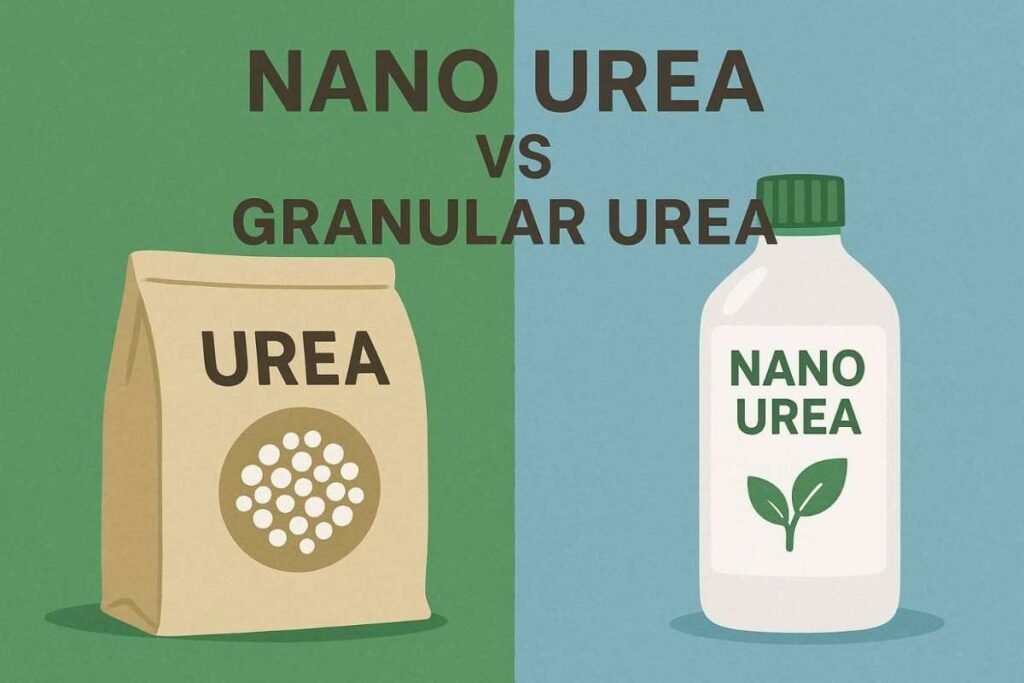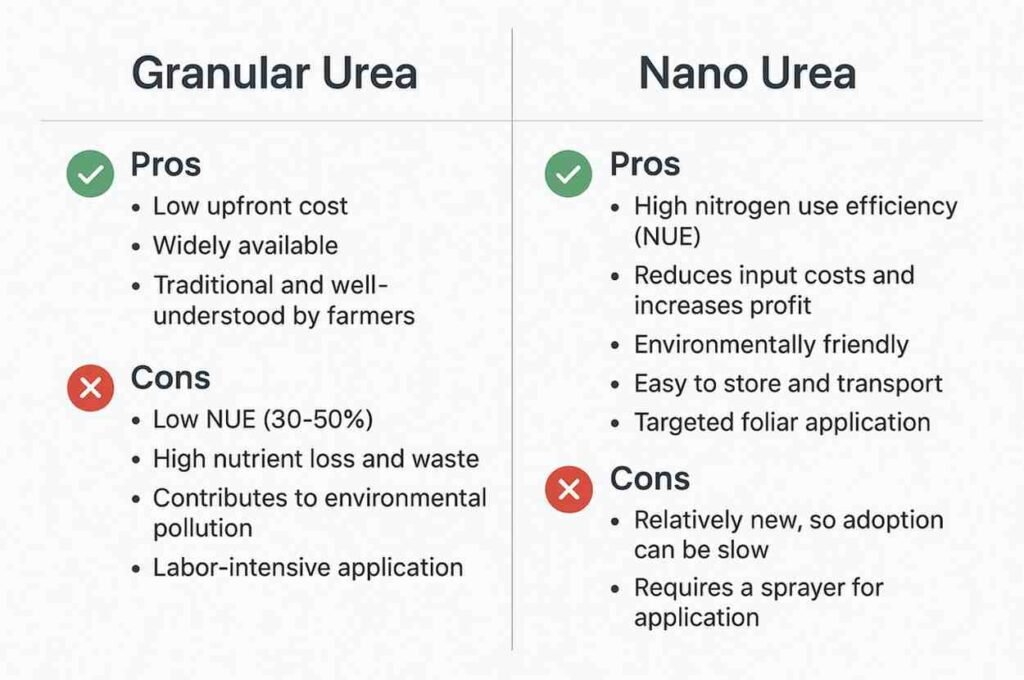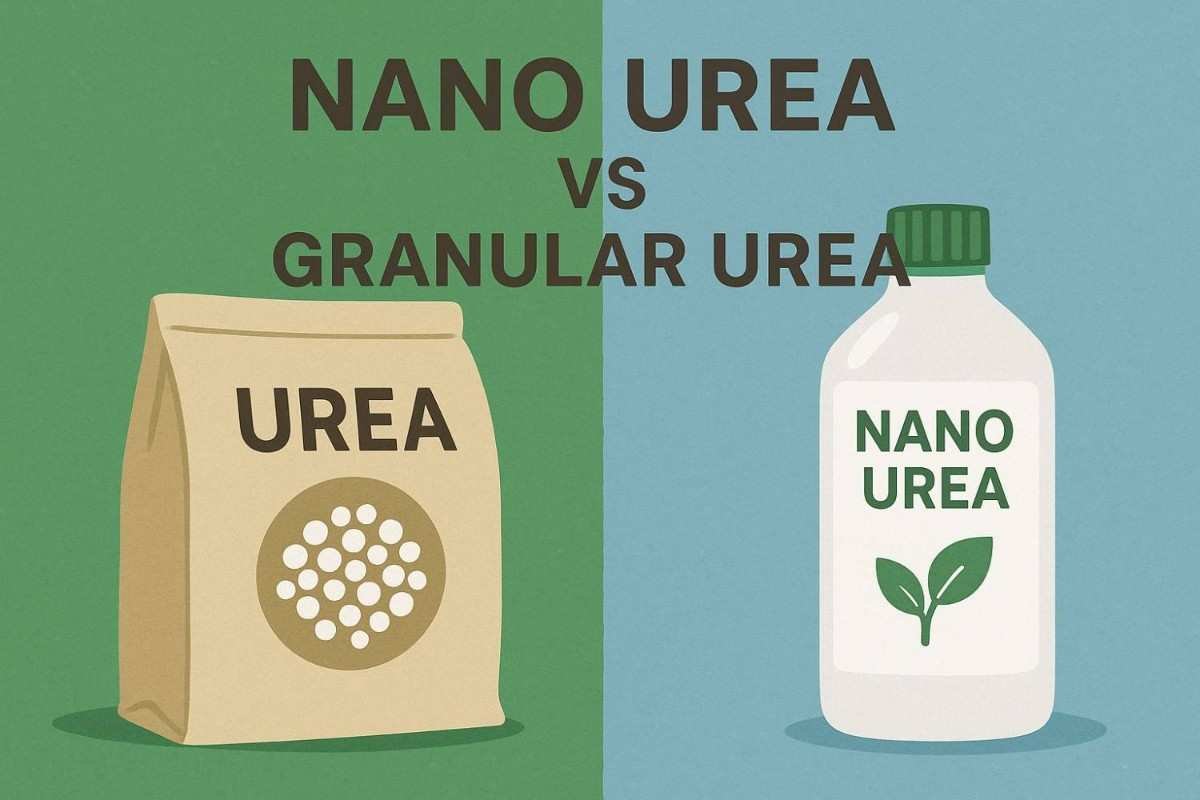
Nano Urea vs. Granular Urea: A New Era in Crop Nutrition
Nano Urea vs. Granular Urea As an agriculture graduate with a background in agribusiness, I’ve seen firsthand how nitrogen fertilizers are the bedrock of modern farming. For decades, granular urea has been the go-to, but with the advent of nanotechnology, a revolutionary product—Nano Urea—is changing the game. In this article, we’ll delve into a head-to-head comparison of these two crucial fertilizers to help you make informed decisions for your farm, keeping in mind key aspects like efficiency, cost, environmental impact, and ease of use.
What Are They? Understanding the Basics
Granular Urea: This is the most widely used nitrogen fertilizer globally. It’s a solid, spherical pellet with a high nitrogen content (46%). Farmers typically broadcast it onto the field or apply it through top-dressing, where it dissolves in soil moisture and is then absorbed by plant roots.
Nano Urea: Developed by IFFCO (Indian Farmers Fertiliser Cooperative), Nano Urea is a liquid fertilizer that contains urea nanoparticles (20-50 nm). Its incredibly small particle size allows it to be applied as a foliar spray, where the nanoparticles are directly absorbed by the plant’s leaves through tiny pores called stomata.
The Comparison: Key Differentiators
1. Nitrogen Use Efficiency (NUE)
This is arguably the most significant difference. Granular urea has a notoriously low NUE, often ranging from 30% to 50%. The rest is lost to the environment through various processes like ammonia volatilization, leaching, and denitrification. This is a major concern for both farmers’ profitability and the environment.
In stark contrast, Nano Urea boasts an impressive NUE of over 80%. This is because of its unique delivery system; when sprayed on leaves, the tiny nanoparticles are directly and efficiently absorbed by the plant, minimizing waste and maximizing nutrient uptake.
2. Method and Timing of Application
- Granular Urea: Applied to the soil, typically in two or three split doses, during the active growth stages of the crop. The application is labor-intensive and requires manual broadcasting or a tractor-mounted spreader.
- Nano Urea: Applied as a foliar spray. The general recommendation is to apply two sprays: the first at the active tillering or branching stage (around 30-35 days after sowing) and the second 20-25 days later, or before flowering. This method is far less labor-intensive and allows for targeted nutrient delivery.
3. Cost and Economic Benefits
- Granular Urea: A 50 kg bag of granular urea is heavily subsidized in many countries, making its upfront cost seem low. However, its low efficiency means farmers often apply more than is necessary, leading to higher overall input costs and lower returns.
- Nano Urea: A 500 ml bottle of Nano Urea is priced competitively and is claimed to be equivalent to one 45 kg bag of conventional urea. While the per-liter cost might seem higher, the significant reduction in the required quantity, coupled with higher efficiency and lower labor costs, can lead to a substantial increase in farmers’ profits. Studies have shown it can reduce the need for granular urea by at least 50%.
4. Environmental Impact
The excessive and inefficient use of granular urea has a significant negative impact on the environment. It contributes to:
- Greenhouse Gas Emissions: Volatilization of ammonia releases nitrous oxide (N_2O), a potent greenhouse gas, into the atmosphere.
- Water Contamination: Nitrate leaching into groundwater and surface water bodies leads to water pollution and can cause eutrophication, harming aquatic ecosystems.
- Soil Health Degradation: Over time, the repeated application of granular urea can affect soil pH and microbial health.
Nano Urea offers a more sustainable solution. Its targeted foliar application and high NUE drastically reduce nutrient loss, thereby minimizing the carbon footprint and preventing soil and water pollution. It’s a cleaner, greener alternative that aligns with modern sustainable agriculture goals.

Why Nano Urea is the Future
While granular urea has served agriculture for a long time, its inefficiencies and environmental costs are becoming increasingly apparent. Nano Urea represents a leap forward, leveraging cutting-edge technology to create a more efficient, economical, and sustainable fertilizer.
For a farmer, the decision to switch from granular to Nano Urea is not just about adopting a new product; it’s about embracing a more productive and responsible way of farming. By reducing fertilizer waste, protecting the environment, and boosting profitability, Nano Urea is poised to become the new standard in nitrogen management.
For more articles click here











1 thought on “Nano Urea vs Granular Urea: The Future of Farming is Here”
Comments are closed.